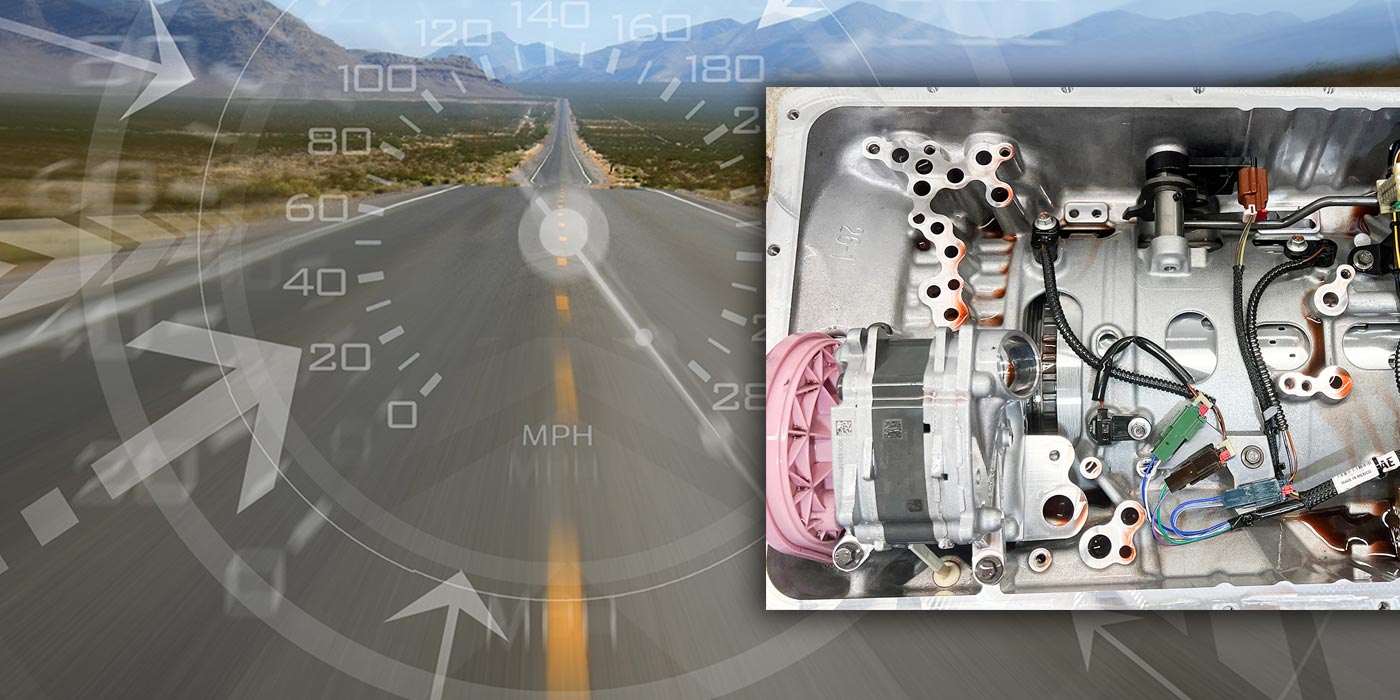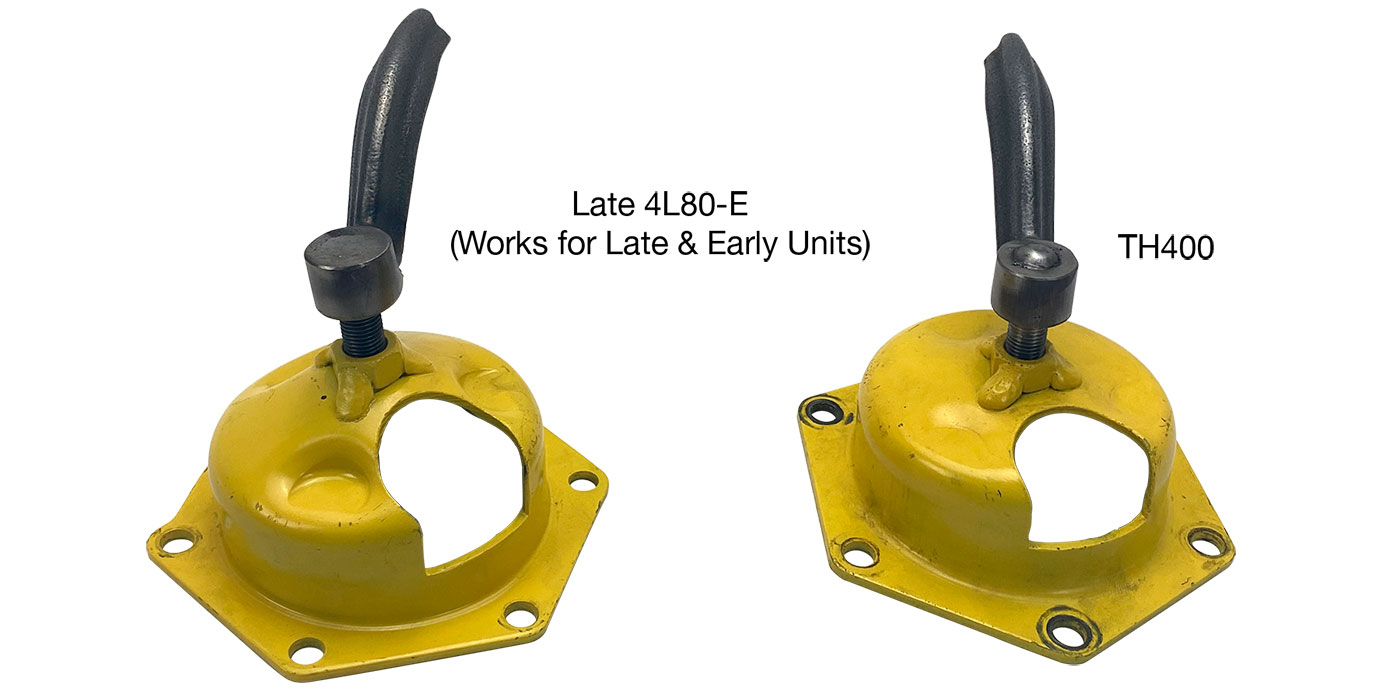
TASC Force Tips
- Author: Ed Lee, Deltrans
Most transmission technicians who work on rear-wheel-drive Chryslers are all too familiar with the devastation associated with poor lubrication. Galled governor supports, galled and/or seized output shafts, or rounded sun and planetary gears are all common failures (see Figure 1). Although towing a vehicle with the drive wheels on the ground will yield the same results, the vast majority of failures are caused by a simple lack of or insufficient lubrication.
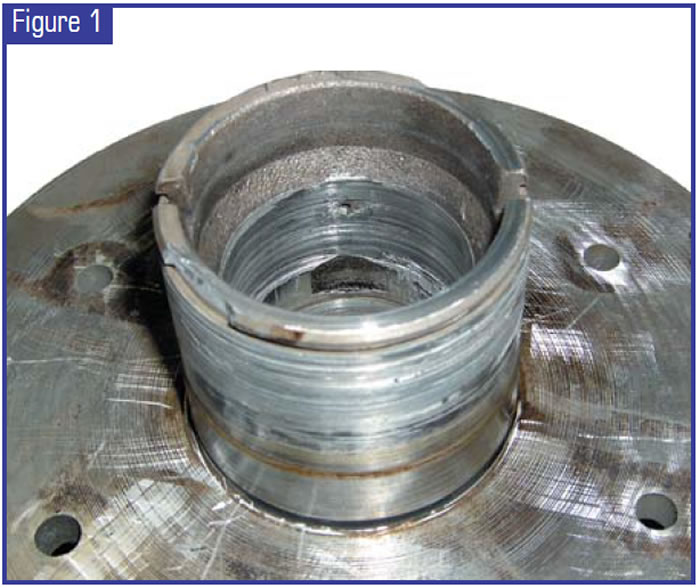
To find out why a transmission has failed, the first test you should perform is to check the rate of flow at the cooler return line where it meets the return-line fitting at the transmission. One quart in 20 seconds is a good minimum specification. If you don’t have sufficient flow at the cooler return line, you’ll want to verify that there is good flow coming to the cooler circuit. You can do this by checking the rate of flow as it exits the transmission before entering the cooler circuit.
If the flow rate is acceptable when it enters the cooler circuit, you then must isolate the individual components of the circuit to determine where the restriction lies. Don’t overlook secondary auxiliary coolers, inline filters, inline checkvalves or even checkvalves in the cooler fittings.
The A500 and 518 transmissions have been around since 1988, but converter drain-down was not significant enough to warrant an inline checkvalve until the 1994 model year. In 1994, the three-land switch valve was replaced with a four-land valve. The four-land switch valve altered the converter feed circuit, increasing the probability of drain-back, making the checkvalve a preventive measure. The boost-valve tube also was added at this time, making the valve bodies easy to identify.
In 1996 the checkball was upgraded to Viton® for increased durability (see Figure 2). Inside the checkvalve with the ball you will find a spring and spring seat (see Figure 3). The spring seat works like the strainer on your floor-drain or shower-stall debris catcher. The spring collapses as cooler flow increases, making it an additional debris catcher. If you disassemble an inline checkvalve after a converter-clutch failure, the spring and seat will look like a cyclone fence after floodwaters have receded. Technicians have reported finding as many as three individual checkballs in one checkvalve. Checkballs that have increased in size are also common (see Figure 4).
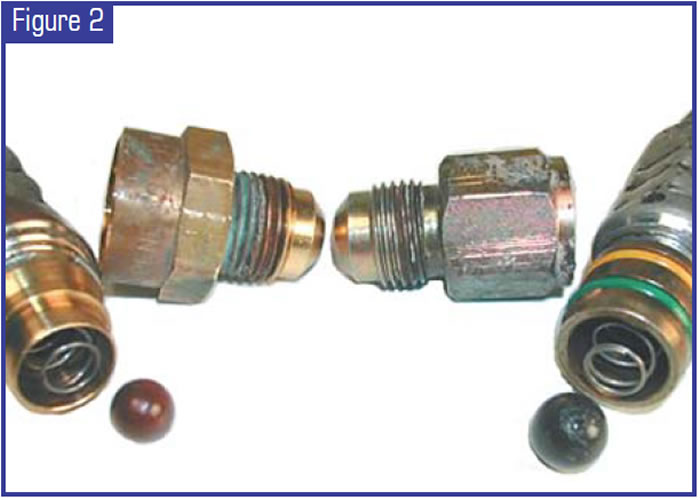

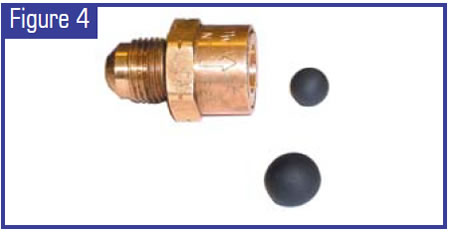
The Wynns-Precision Inc. O-ring Handbook tested 675 commercial fluids and chemicals on nine different elastomers. The fluids ranged from water to acid and included such favorites as ketchup, coffee and Coca Cola. The elastomers (polymers) range from Nitrile to TFE propylene (3M trade name AFLAS). Since the fluorocarbon (Viton) is the elastomer most widely accepted by the transmission industry, we will zero in on it.
The Wynns-Precision Inc. O-ring Handbook used this rating guide:
- A: Satisfactory
- B: Fair
- C: Doubtful
- U: Unsatisfactory
- X: Insufficient data
Of the 675 commercial fluids and chemicals tested, a full 20% (136) tested unsatisfactory on Viton. With this high percentage of unfavorable results, the chances of some amateur chemist moonlighting as one of your transmission technicians flushing a cooler with a substance that will affect the checkball in the checkvalve is pretty good.
You may have good flow through your cooler and still have a lube-related failure. If you check the rate of cooler flow as you drive, you’ll see that as line pressure increases in response to increased throttle valve, cooler flow decreases. If you check a vehicle with a Cummins diesel engine, with an increased GVW or towing a trailer on a long grade, you will see the cooler flow decrease to almost zero. Drilling line to lube will help the lube problem but also will cause a drain-down problem. The best way to address this problem is to install a pressure-regulator valve with the line-to-lube passage incorporated into the valve and a checkvalve to prevent converter drain-down. This also puts the checkvalve upstream of the converter (the most debris-causing culprit.) With the checkvalve in the pressure-regulator valve, you no longer need the checkvalve in the line.
You will be able to sleep a lot better not worrying about the inline checkvalve or what fluid your technician is using to flush the coolers.
Special thanks to Sean Byrd, forensic technician for Jasper Transmissions, and Brenda and Bob Warnke of Sonnax Industries Inc.

The TASC Force (Technical Automotive Specialties Committee) is a group of recognized industry technical specialists, transmission rebuilders and Sonnax Industries Inc. technicians.











